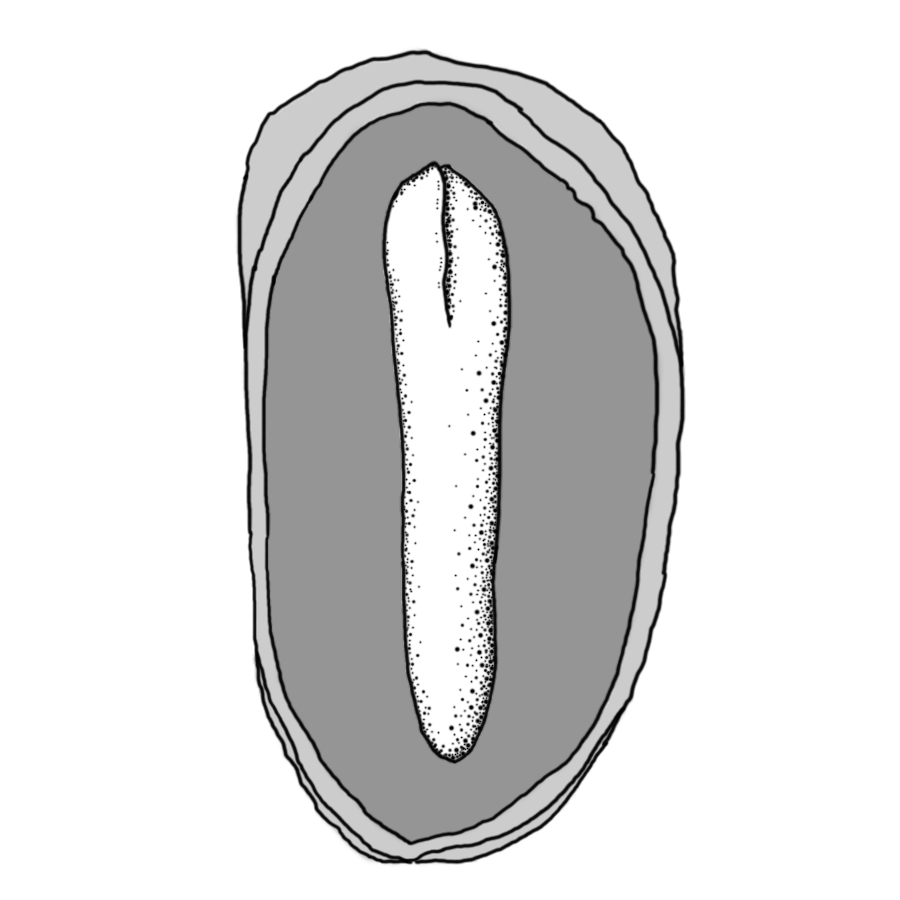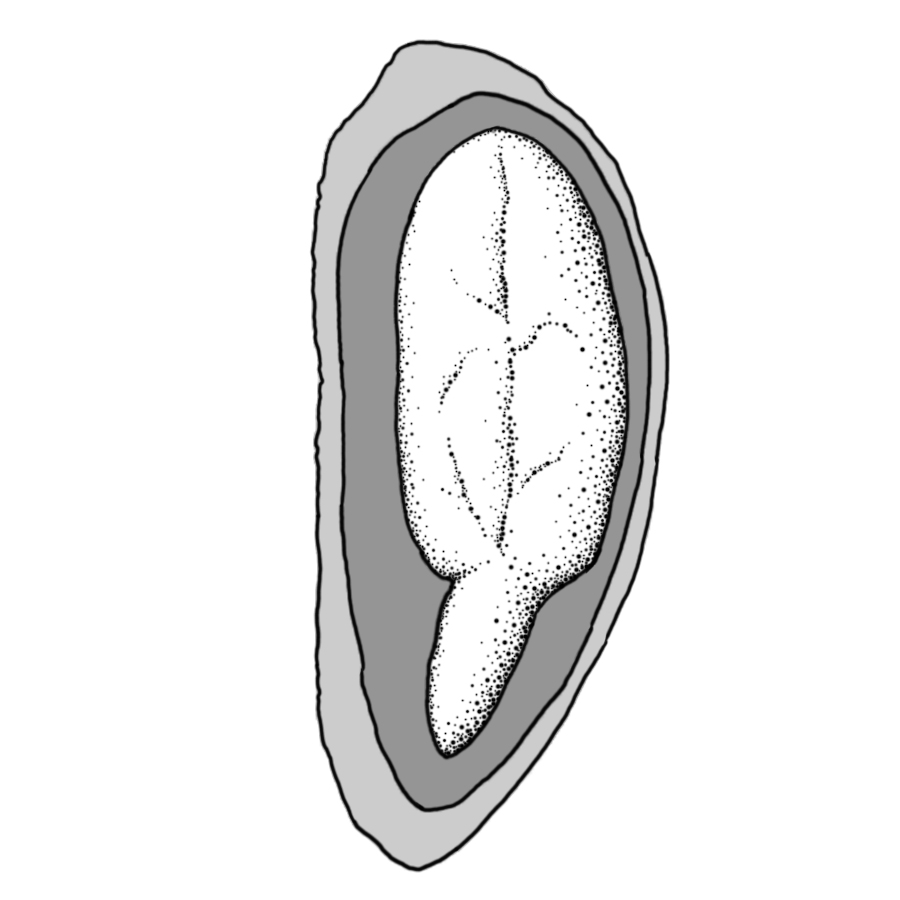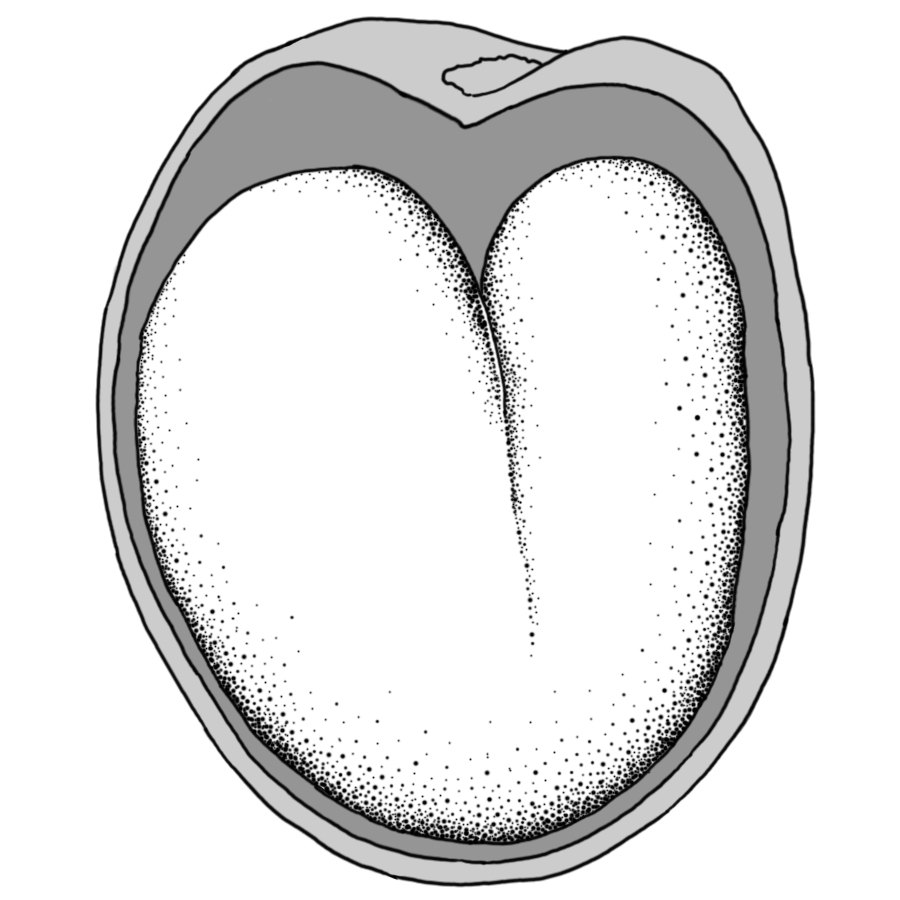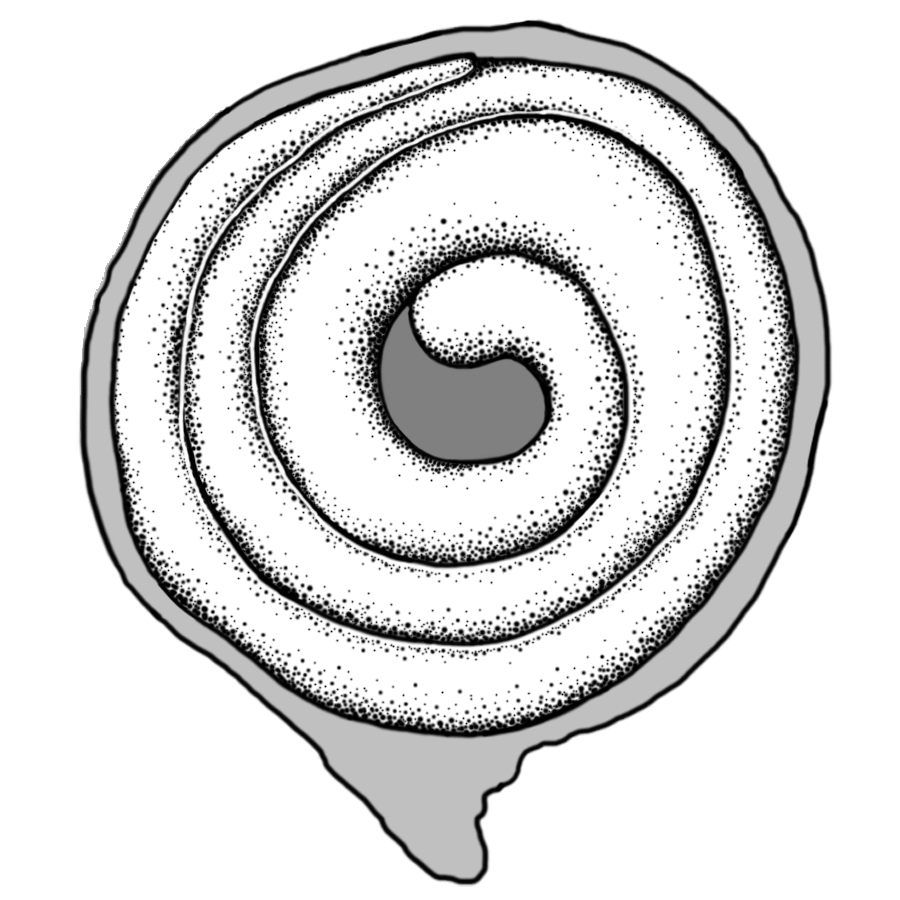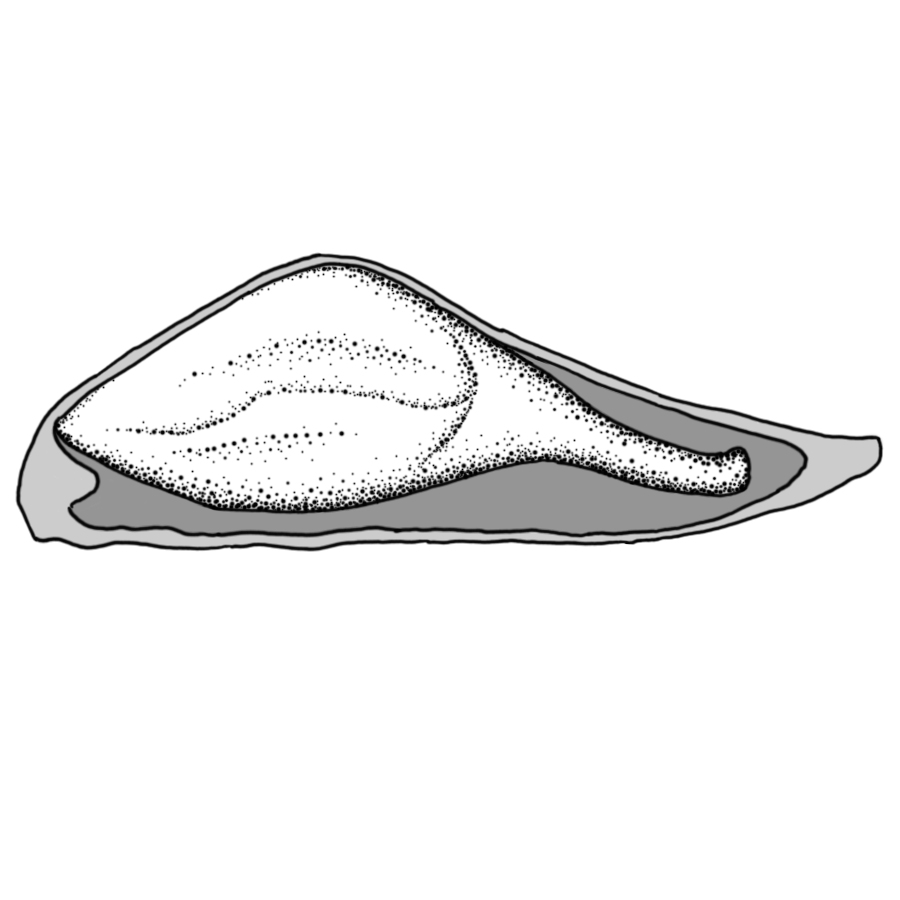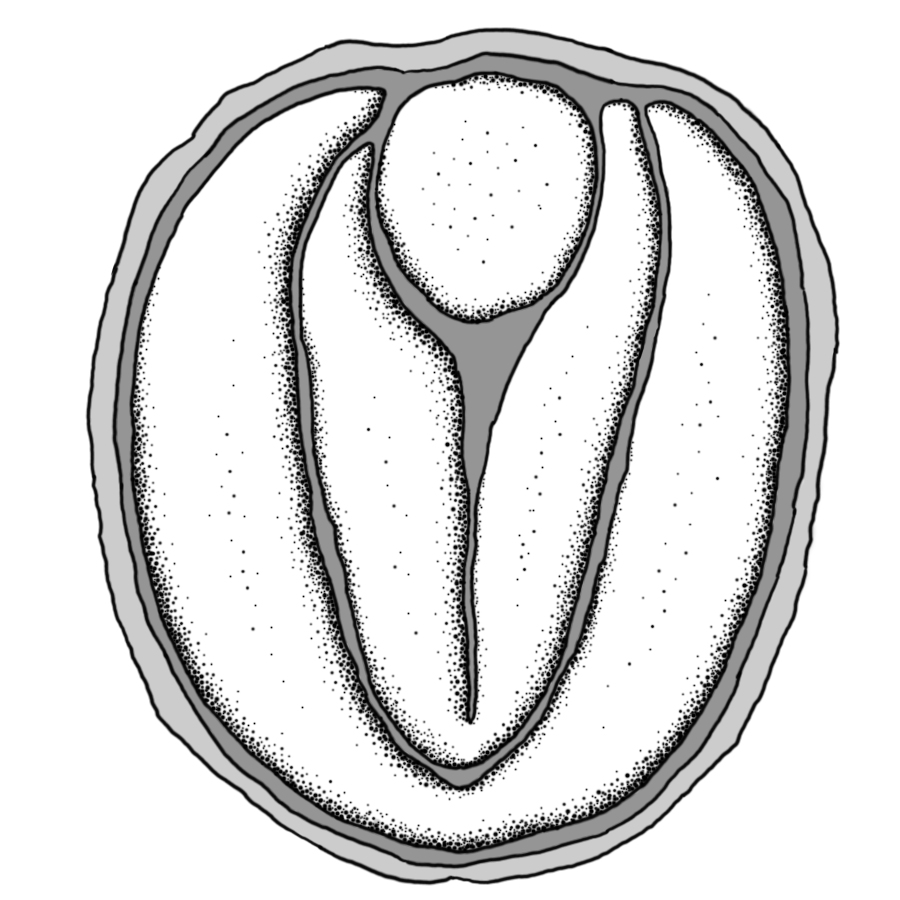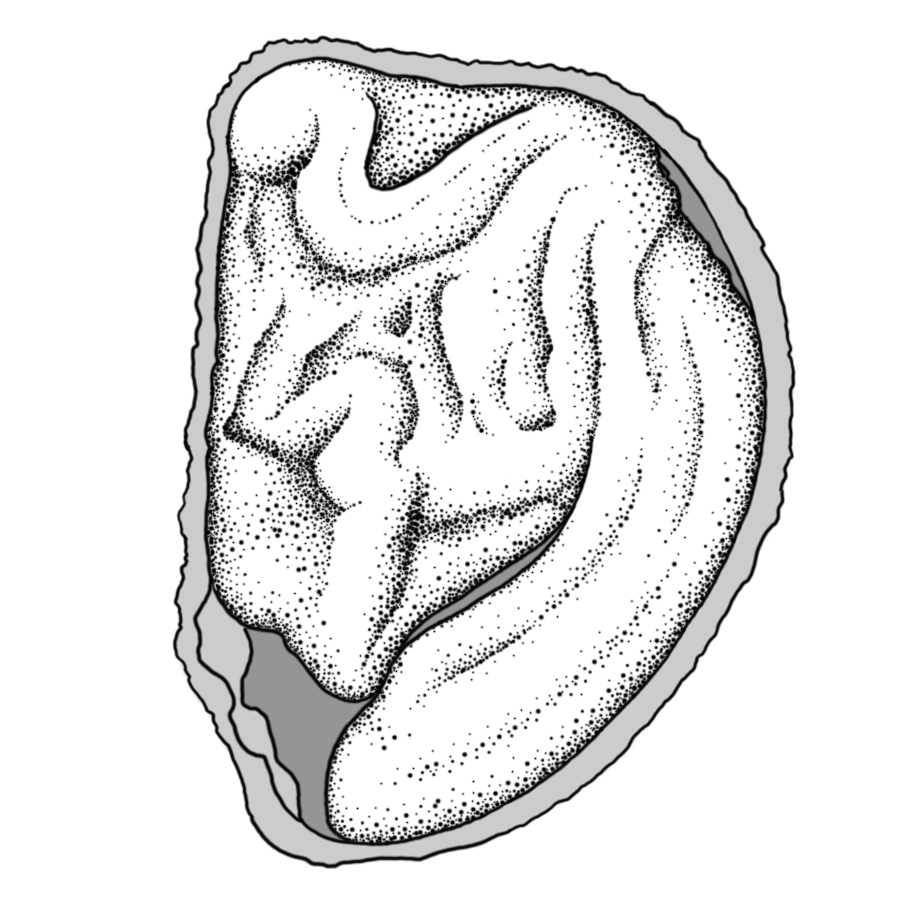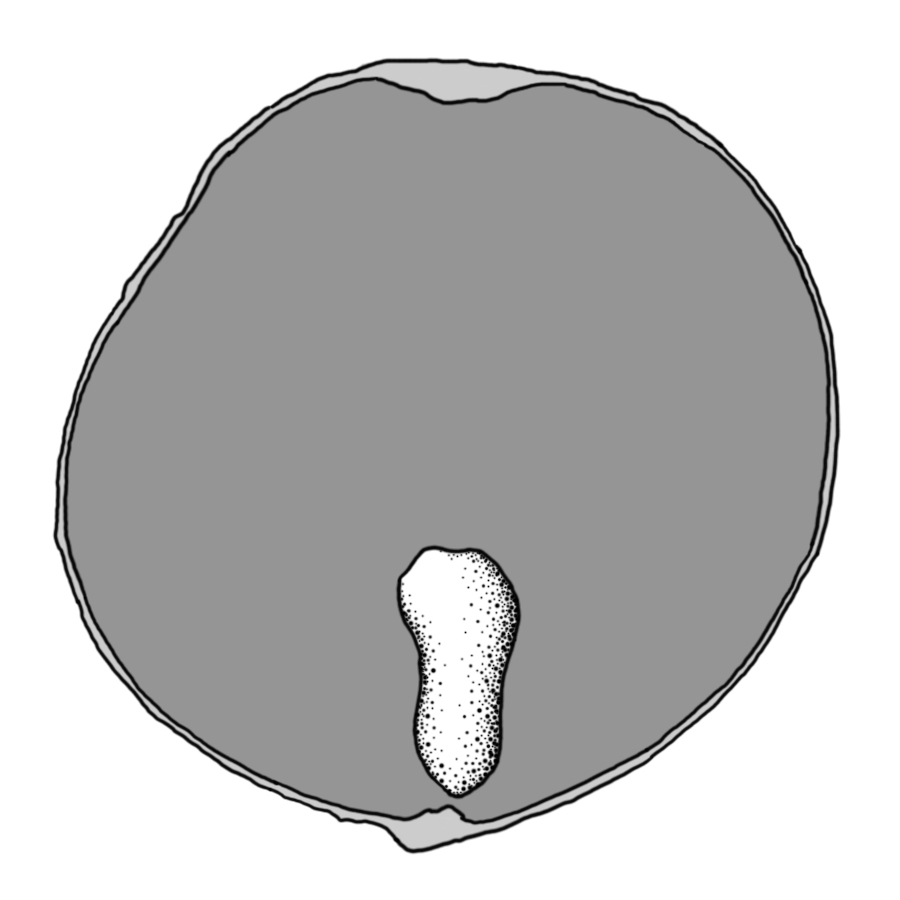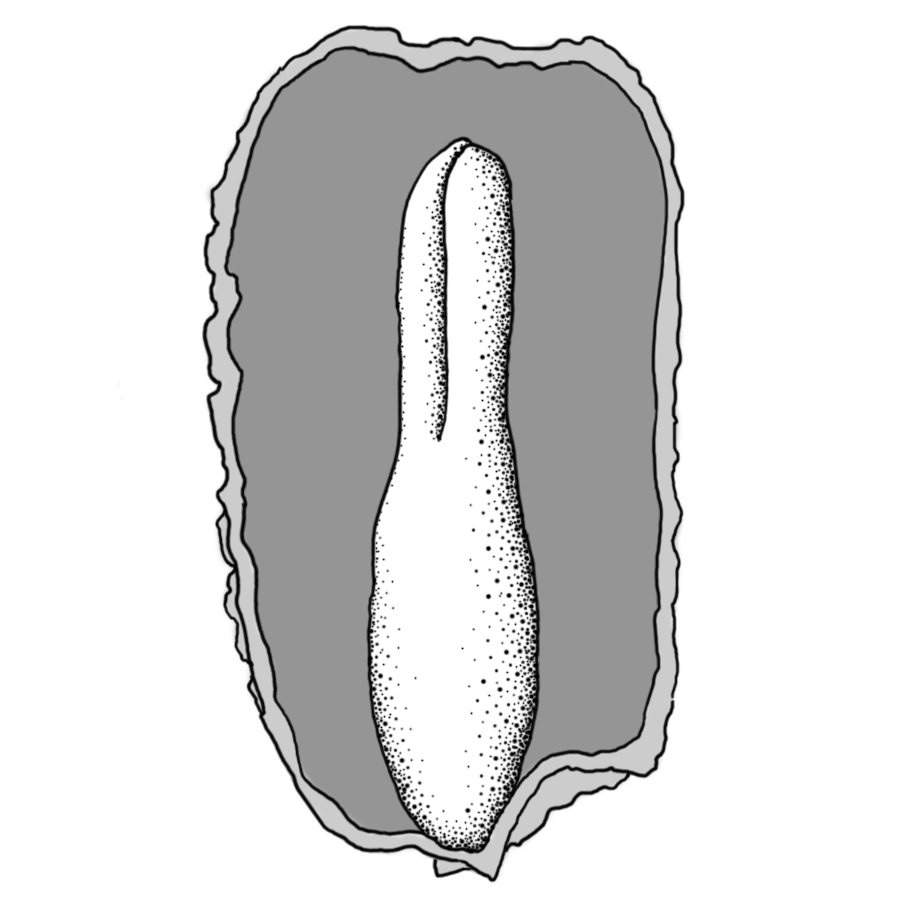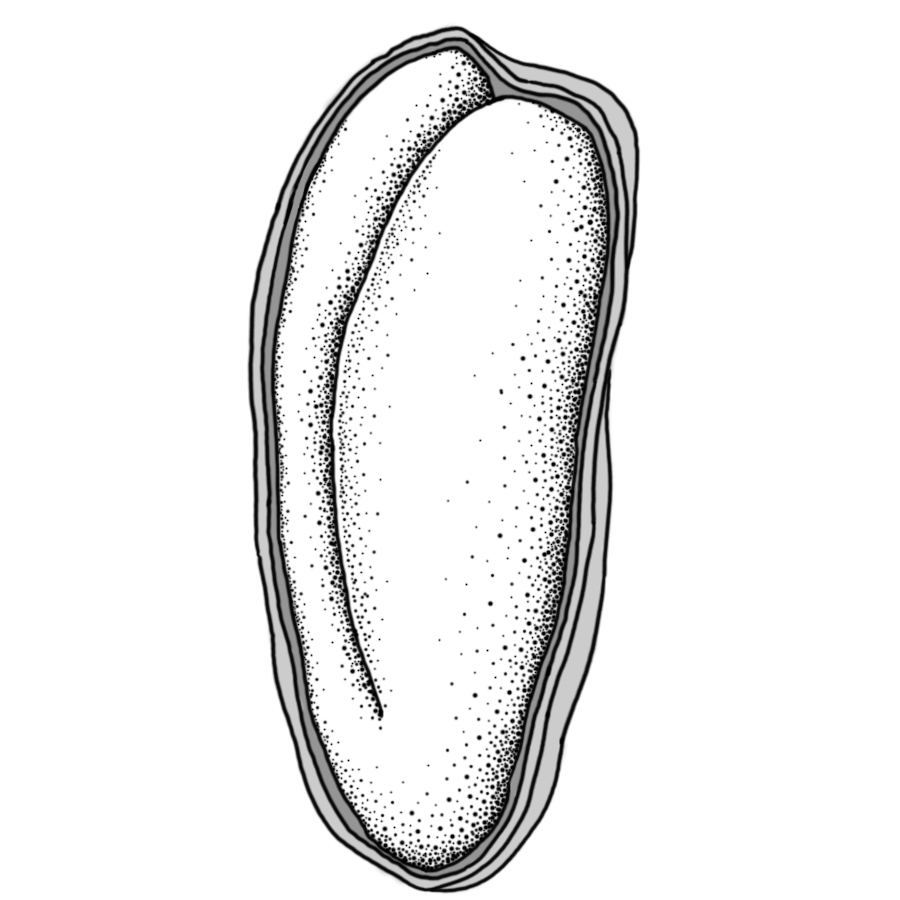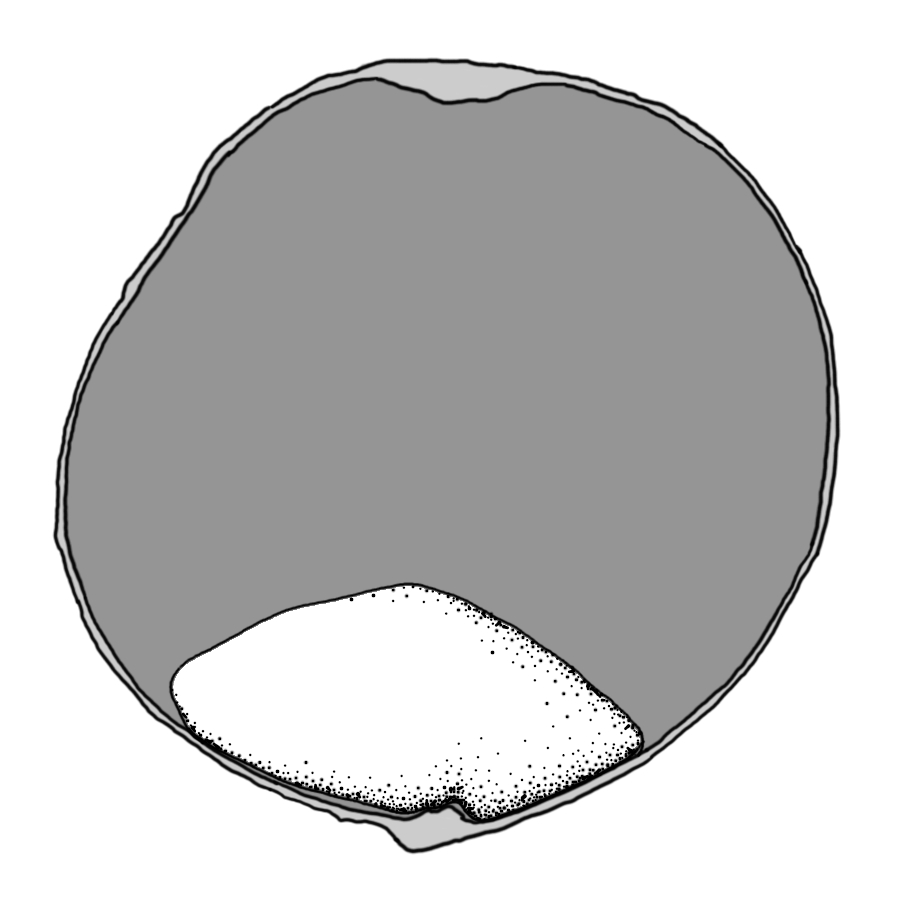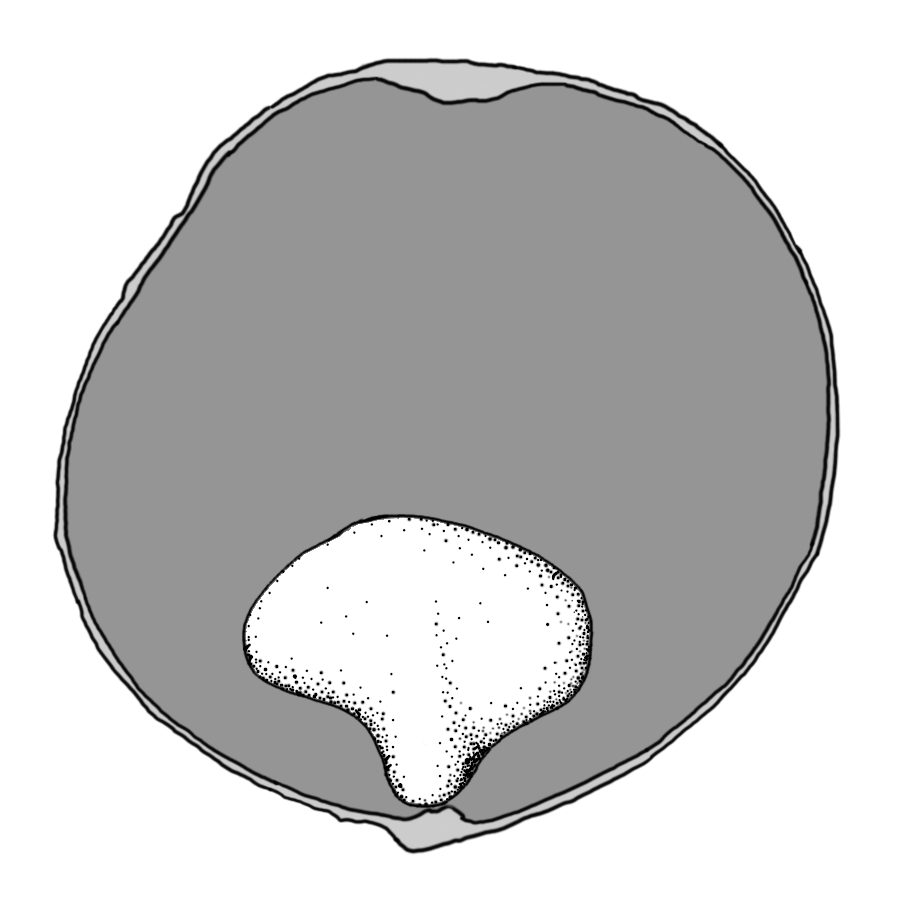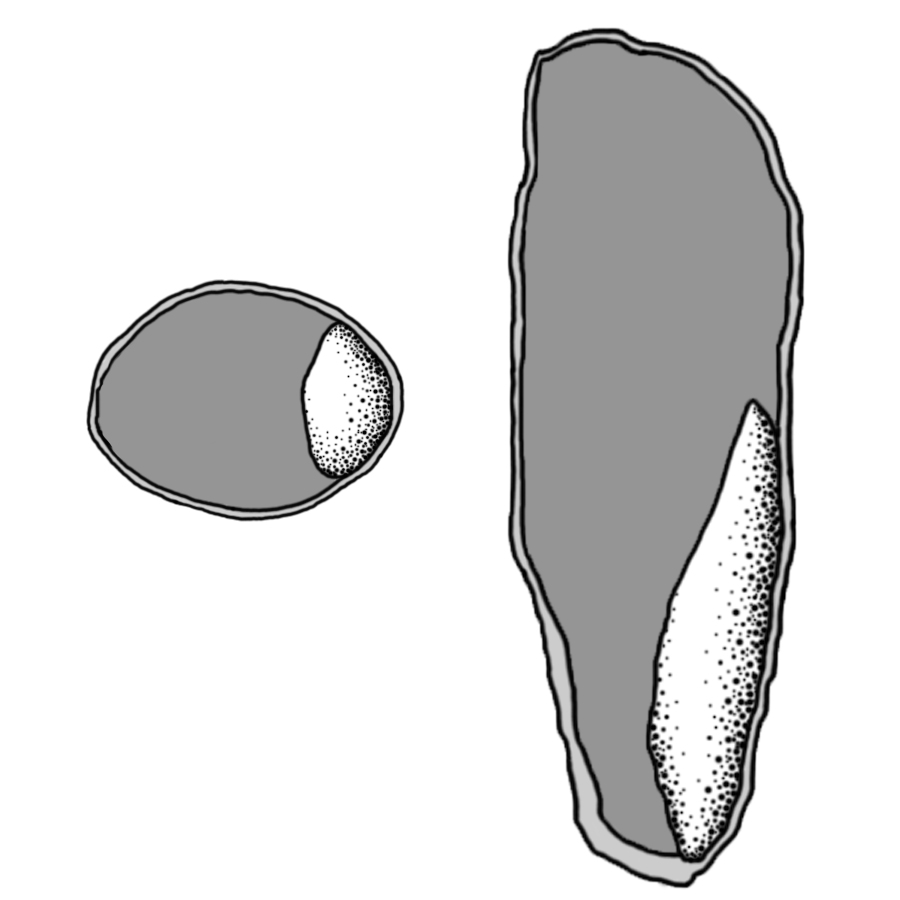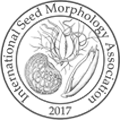Common Embryo Feature Description
Seed embryo features can be described in terms of shape, size, and position within the seed. These features can be examined in both longitudinal and cross-sections of a seed or a fruit under magnification. The core features listed here are a guide for authors and readers; a particular species could have a combination of several features to fully describe the embryo of the seed.
*Please note: General seed shape descriptions also apply to the shape description of the embryo; however, those shapes are not displayed here. To see more general shapes, please refer to the Common Shape Description.
Embryo Shape
|
Linear |
Spatulate |
Bent |
|---|---|---|
|
|
|
|
|
The embryo is straight and much longer than wide. This embryo shape is commonly found in the Pinaceae, Liliaceae, Ericaceae, and Primulaceae families. |
The embryo is straight with the cotyledons expanded to form the shape of a spatula or spoon. This is a common embryo shape found in a number of families including the Boraginaceae, Euphorbiaceae, and Asteraceae. |
The embryo is bent at an acute, V-shaped angle with the ends close together and generally thick cotyledons. This embryo shape is commonly found in the Fabaceae and Brassicaceae families. |
|
Curved |
Circular |
Coiled |
|---|---|---|
|
|
|
|
|
The linear embryo is curved into an arch or horseshoe with the ends far apart. This embryo shape is typical of the Solanaceae and Polygonaceae families. |
The linear embryo is curved into an "O" shape. This embryo shape is typical of the Solanaceae, Amaranthaceae, and Caryophyllaceae families. |
The linear embryo is very long and bent to form a coil whereby one end of the embryo is on the outside and the other end near the middle of the seed. This embryo shape is found in the Chenopodiaceae, Solanaceae, and Caryophyllaceae families. |
|
Angular |
Simple Folded |
Irregular Folded |
|---|---|---|
|
|
|
|
|
The embryo is straight with the cotyledons forming an angular shape inside the seed, common in the Boraginaceae family. |
Cotyledons are generally thin and each is folded once to fill the seed, found in spherical seeds of the Brassicaceae family, such as Brassica spp. |
The embryo is irregularly folded and compressed inside the seed. This embryo shape is a feature of the Convolvulaceae family. |
Embryo Size
Embryo size is generally not measured directly, but quantitatively described relative to the entire seed.
|
Rudimentary |
Partial |
Filled |
|---|---|---|
|
|
|
|
|
The embryo is small and fills less than a quarter of the seed and can be variable in shapes, such as linear, spatulate, or oval. Families that have small embryos include the Liliaceae, Ranunculaceae, and Poaceae. |
The embryo occupies over one-quarter of the seed interior but less than full, with some endosperm present. Partial embryo size is common in families with spatulate, linear, and curved embryo shapes. |
The embryo fills the seed interior with the food reserves stored in the cotyledons. Small amounts of endosperm may remain around the embryo. This type is common in the Fabaceae, Brassicaceae, and Asteraceae families. |
Embryo Position
The position of the embryo inside of the seed is independent of the size or shape of the embryo and generally falls in one of four categories. Note that some embryo positions are common to specific plant families.
|
Basal Position |
Narrow |
Broad |
Capitate |
|---|---|---|---|
|
The embryo occupies one end of the seed. This position is common in families with small or rudimentary embryos such as the Cyperaceae, Ranunculaceae, and Liliaceae. The embryo may be longer than wide (narrow type) wider than long (broad type) or has one narrow end and one expanded end (capitate type). |
|
|
|
|
Axial Position |
|
|
|
|---|---|---|---|
|
The embryo is situated along the longitudinal axis of the seed, and may partially or completely fill the seed. This position is found in families with linear, spatulate, bent or folded embryos. |
|
|
|
|
Peripheral Position |
|
|
|
|---|---|---|---|
|
The embryo is curved around the outer edge of the seed, near the seed coat. This embryo position is commonly found in families with curved, circular, or coiled embryos. |
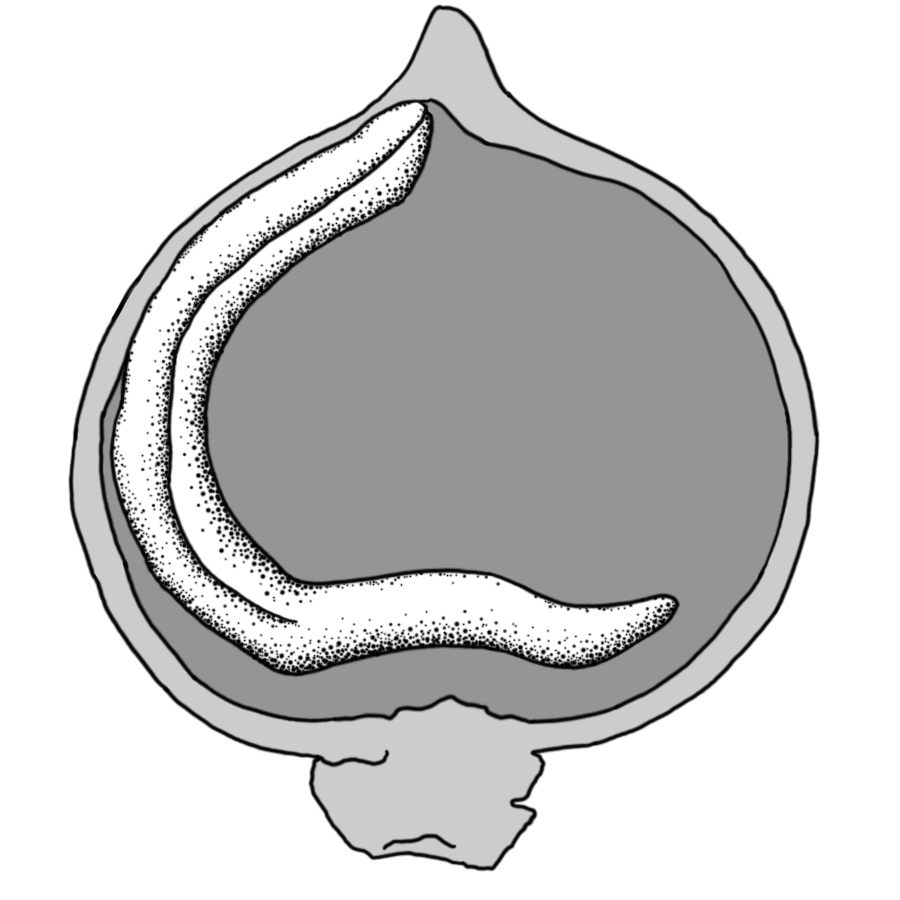 |
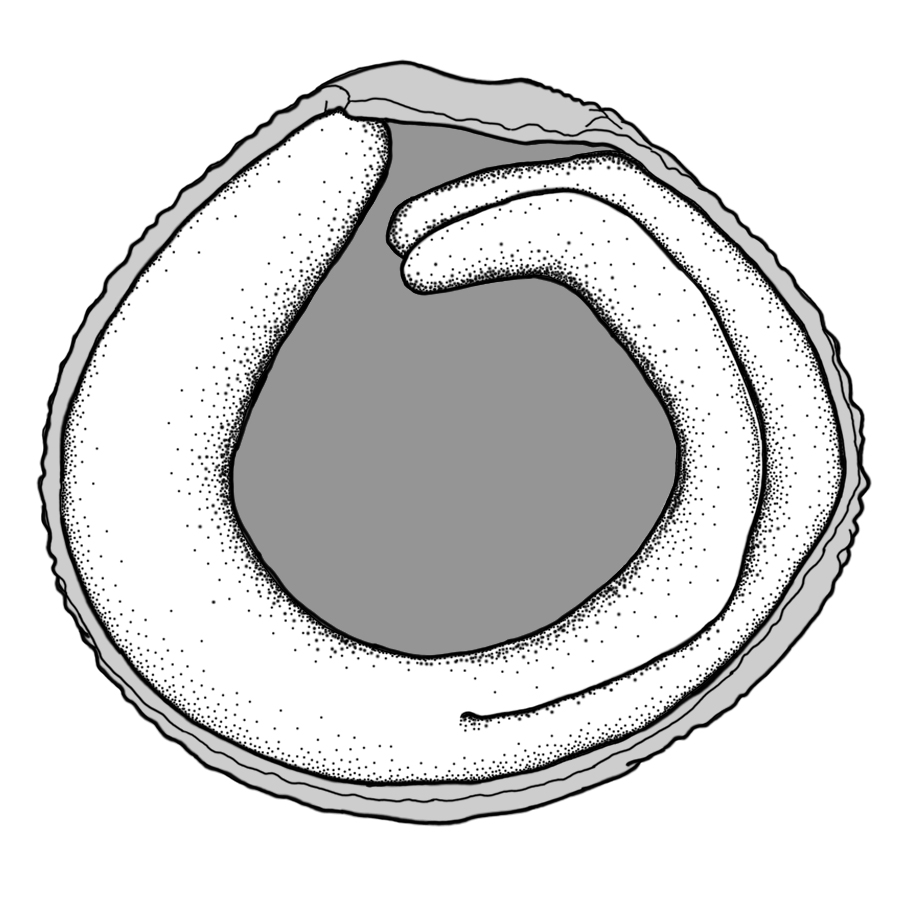 |
|
Lateral Position |
|
||
|---|---|---|---|
|
The embryo lies along the side of the seed, generally towards one end. This lateral embryo type is unique to the Poaceae family. |
|
References: |
|
Baskin, C.C. and J.M. Baskin. 2007. A revision of Martin’s seed classification system, with particular reference to his dwarf-seed type. Seed Science Research 17: 11-20. Baskin, C.C. and J.M. Baskin. 2019. Martin’s peripheral embryo – unique but not a phylogenetic ‘orphan’ at the base of his family tree: a tribute to the insight of a pioneer seed biologist. Seed Science Research 29: 155-166. Martin, A.C. 1946. The comparative internal morphology of seeds. The American Midland Naturalist 36: 513-648. Martin, A.C. and W.D. Barkley. 1961. Seed Identification Manual. University of California Press, Los Angeles. 219 pp. |
Authored by: |
Drawings by: |
Reviewed by: |
||
|
Jennifer Neudorf, Ruojing Wang, Angela Salzl and Taran Meyer Saskatoon Laboratory, Seed Science and Technology Section Canadian Food Inspection Agency |
Taran Meyer Saskatoon Laboratory, Seed Science and Technology Section Canadian Food Inspection Agency |
Wolfgang Stuppy Botanic Garden Ruhr-University Bochum, Germany |
©2021 Canadian Food Inspection Agency, all rights reserved.


